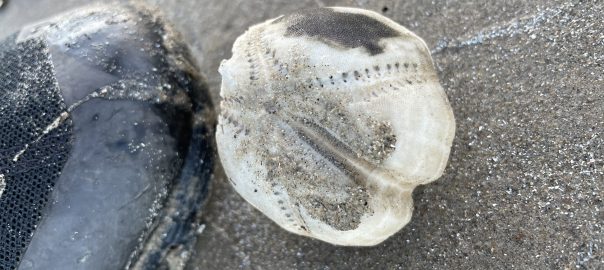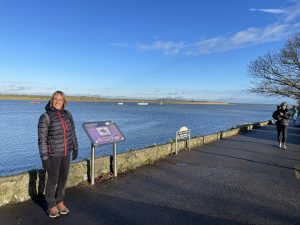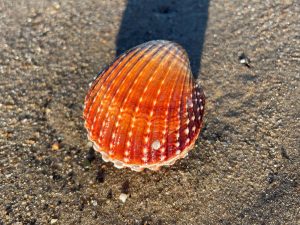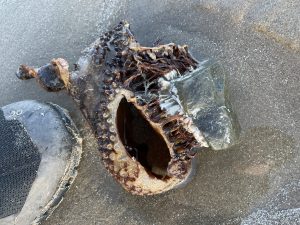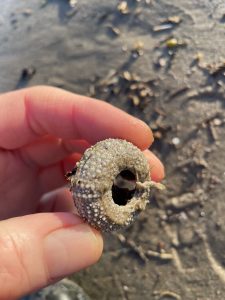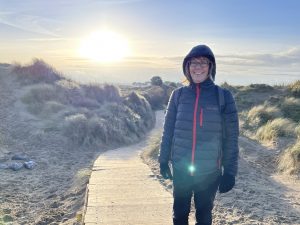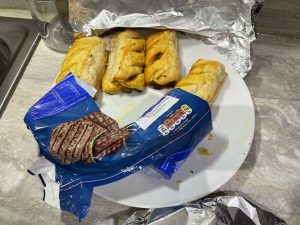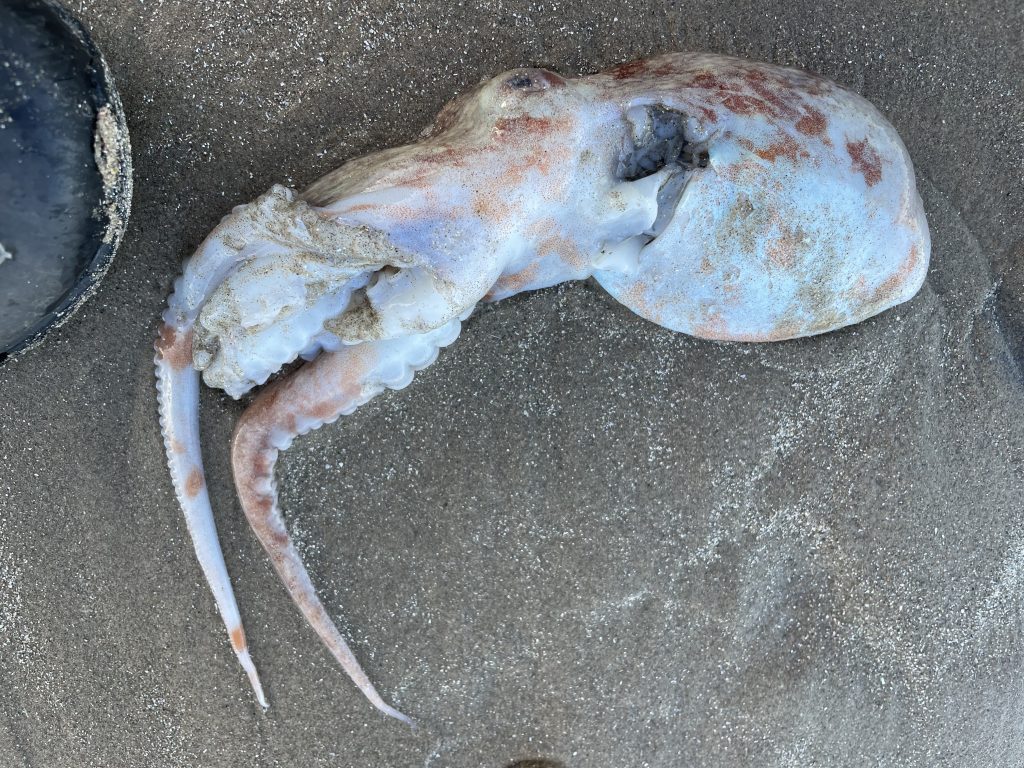Ireland day 0101. Friday 07 January 2022- Cephalopod
| Today’s summary | Late morning brunch then walked down the coast to Portmarnock and got train back after walking halfway down the Velvet Strand. High tide had washed up lots of interesting flotsam | ||||
| Today’s weather | A faint covering of snow in the morning. Disappeared quickly but felt chilly all day. Dry and sunny most of the time. Moderate north westerly breeze. About 3C | ||||
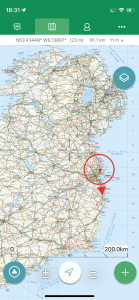 |
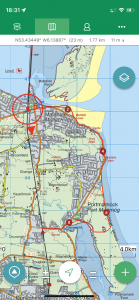 |
||||
| Today’s overview location (the red cross in a circle shows where Val and I are at the moment) |
Close-up location (Click below to download a GPX of today’s walk – interactive map also at the bottom): Beachcombing Portmarnock |
||||
Commentary
Yes – I know. The picture at the top is an echinoderm not a cephalopod. But read on, before Mr or Mrs Angry writes to the BBC about it.
We have been into Dublin quite a few times lately and we both independently concluded that today that we wanted to spend a bit more time out in the open air. Particularly as when we opened the blinds this morning we discovered that there had been a thin smattering of snow overnight – the first we have seen at sea level since we got to Ireland. But despite our enthusiasm for getting out quickly, there were a couple of jobs we needed to do first. Val went out on a quick run round the castle demesne (hats off to her for her determination) and I started writing an article on Ascension Island for a walking club magazine.
So it was lunchtime before we had finished faffing around, and even when we did manage to get away, we still had to do some shopping before we could begin our walk properly. But eventually we were away, only to find pretty quickly that by that time, all the snow had evaporated and – worse – that our plan to try and walk all the way down the beach to Portmarnock had been thwarted by an unusually high tide. So we retreated to the shore-line and at the points where the the waves were crashing on the sea wall, we climbed up off the actual shore and onto the coast path a bit higher up.
But where we could access the sea, we discovered that the high water had brought with it an unexpected bonus – a fascinating array of interesting flotsam – mostly dead animals it has to be said – beached on a narrow strip of sand about half a meter wide, where the tide had just turned. (By the way, and I will admit it – I had to look up what the difference between flotsam and jetsam was. I learned that flotsam is stuff that is accidentally or naturally washed into the sea, whereas jetsam is stuff that is deliberately chucked overboard from ships, mostly. Think “jettison” as a mnemonic).
The two types of detritus that were particularly fascinating were the sea urchins – pictured at the top of this blog and in one of the pictures below – and the dead octopus you can see in the big image at the bottom.
Sea urchins belong to the very large biological phylum Echinodermata, which also includes things like starfishes, sea lilies, and sea cucumbers. They are all characterised by having hard ossified (stony) skeletons . And because they come from a very geographically widespread phylum (living in arctic, tropical, coastal and abyssal waters) and have been around for a long time (at least 500 million years) they are abundant in the fossil record and are useful for helping to date host rocks quite accurately.
Octopuses (should that be octopi?), on the other hand, belong to the biological class Cephalopoda. “Cephalopod” literally means “head on leg” and if you look at an octopus you can see why. You can work out for yourself what “gastropod” means. Like the echinoderms, they are geographically widespread and have been around for half a billion years. They are well represented in the fossil record, particularly through things like the (now extinct) ammonites and belemnites. The reason for mentioning all this is because we actually found a small dead octopus today – probably the first I’ve ever seen in the sea as opposed to in a fishmongers or on a plate of polpo. Not a thing of great beauty, and it was a bit sad to see it in its deceased form. Still, I guessed it would probably make a nice tasty meal for a seagull.
Anyway, all that was a bit of a biological digression, so we pushed on with our walk as far as we could down the Velvet Strand, than headed inland where the high tide had completely covered the shore some way south of Portmarnock. At that point we found a path heading west through the dunes, and set off along it to explore the marshlands beyond the sand-spit. We had intended to have a snack while watching the oystercatchers here, but it was so chilly that we didn’t feel much like hanging around. And we didn’t really fancy a long road-walk back to Malahide either, so we took the soft option and caught the train back.
So now I need to get on with a bit more Ascension and to try a bit harder to find some online Sevilles. Still no joy in any of the shops in Malahide, so we might have to go a bit further afield, I’m afraid.
Today’s photos (click to enlarge)
Interactive map:
(GPS elevations replaced with DEM via
GPS Visualizer: Assign DEM elevation data to coordinates)
Max elevation: 14 m
Min elevation: -1 m
Total climbing: 133 m
Total descent: -133 m
Total time: 02:25:39
